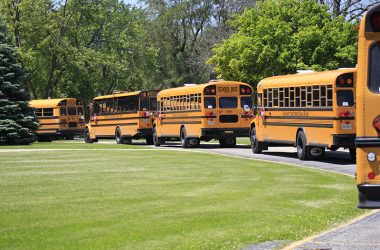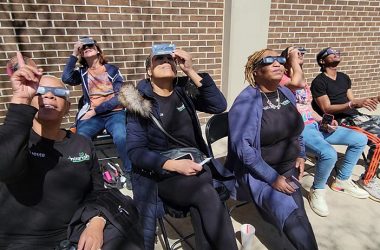Some “ugly” data confronted Flossmoor School District 161 board members as they reviewed district report cards during their July 18 meeting.
District administrators presented data compiled from two standardized tests that students took in the 2021-22 academic year, including the Northwest Evaluation Association Measure of Academic Progress Growth test (MAP) and the aimswebPlus test.
Amabel Crawford, the district’s Director of Learning and Instruction, presented the MAP testing results, which rate students’ performance based on their projected growth — whether students in a given grade level cohort met the expectations for learning growth set after the previous year’s test in spring 2021.
In the reading portion of MAP testing, results showed only about half of students in most grade levels met growth expectations.
Second grade performed best, with 63 percent of students meeting expectations, while eighth-graders performed the lowest with only 45 percent meeting expectations.
Results in the math portion of MAP testing were more varied among grade levels. While 76 percent of second-graders met their growth expectations, only 36 percent of eighth-graders did.
The remaining grades fell in the middle, with a few near the low end, including sixth grade with 38 percent and seventh grade with only 42 percent meeting expectations.
Crawford explained that while the growth results were low, they exceeded the previous year’s numbers, which were also displayed in the visual presentation.
That 2020-2021 academic year saw students learning remotely due to COVID restrictions. The effects of that year impacted this year’s growth, Crawford said, along with continued issues related to the virus. For example, data show a correlation between lower achievement at schools with a higher number of teacher absences, according to Superintendent Dana Smith.
Test results over the next one to two years should show a more normalized picture of student achievement and growth, Crawford said, without the stress and struggle of a nationwide pandemic. Right now still feels like “catching up,” she said, and the data reflect that.
“Our data is not a reflection of anyone not working hard or our teachers not doing everything they could over the very challenging past two years,” Crawford said.
“It just means what we already know: It’s going to take a lot to pull our students through, to pull our staff through, and do it in a way that does not make data a weapon for students or for teachers.”
The district’s Director of Special Education, Jackie Janicke, presented the aimsweb data. Results from that test place students in one of three groups: low risk, moderate risk and high risk of not meeting end-of-the-year academic targets. It compares the results of tests in fall, winter and spring of the 2021-22 academic year.
First-graders had the biggest changes over time. For the early literacy portion, the high risk group reduced from 58 percent in the fall to 38 percent by the spring. For the math portion, first grade reduced its high risk group by about half, with 45 percent in fall to 21 percent in spring.
Janicke said the data show the district’s middle school students performed well on the reading portion of the aimsweb test. She referenced the consistent improvement in grades five, six and seven, shown in the triangular charts she presented.
“Looking at the middle school triangles, we see that our students have those skills; they’re solid,” Janicke said.
The data also reflect a positive impact of math interventionists the district hired with COVID relief funding, she said.
Included in the report is data about student reading and math readiness based on their ethnicity, including African-American, Hispanic and white. It shows the percentages of students in each ethnic group who fall into three risk levels. Nearly every group saw improvement throughout the academic year.
“One positive is that there has been movement in all of the tiers for each of our groups. No one is stagnant, which is what we do not want to see,” Janicke said.
Looking forward, Crawford said they want to increase the availability of high impact tutoring before school, after school, and remotely. There also will be a strong push for small group instruction, along with strategies for teachers who have to occupy the rest of the class in the meanwhile.
“We also want to do more of getting students with pencil to paper, books in hand,” Crawford said. “Maybe a residual effect of being remote was that, not only did our students get used to using their devices way too much, we also maybe got used to teaching using our devices. We need to find the right balance, set up parameters for the best instruction.”
Board member Michael Rouse encouraged his colleagues not to shy away from data that paints a difficult picture. It’s helpful to identify trouble spots and inconsistencies from previous years, namely pre-COVID years, he said.
“As we look at data, especially during this time, we need to see the ugly part of it because that’s important information as we go about making decisions of how we can best support our teachers, how we can best support our administration. That information isn’t anything we should feel uncomfortable about, or anything that we should hide from,” Rouse said.
“We as a community have gone through some very challenging times, and we as a community need to rally together to help make it through those times in the best interest of our students.”



